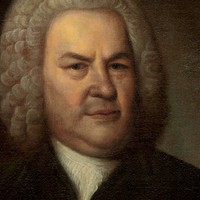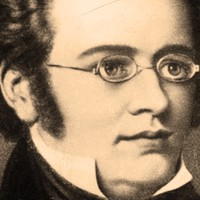Mozart’s Requiem with the St. Olaf Choir

Sponsored By
- May 9, 2020

- May 10, 2020


Sponsored By



By the end of Bach’s life, formal polyphony—fugues, canons and the like—had fallen out of fashion. While other composers, including his sons, developed new homophonic styles (i.e., music with one recognizable melody line), Bach spent his final decade working out the most sophisticated counterpoint imaginable. He reached new heights in the Goldberg Variations and the collection of fugues and canons known as The Musical Offering, but his most rigorous undertaking of all was The Art of Fugue. He completed an initial version in the early 1740s, and he was working to expand and revise it at the end of his life, at a time when his failing eyesight forced him to dictate compositions to his sons or other scribes.
The Art of Fugue, in its final form, comprises 14 fugues and four canons, all utilizing the same theme. All that is except for the Contrapunctus XIV that breaks off midstream, and this is where the mystery lies. It seems clear that the final fugue was on its way to summing up the entire cycle, and truly the very art of fugue, with an appearance of the unifying theme as the last of four superimposed subjects, in what would have been a dizzying technical feat. But the score only gets through the third subject (which happens to be Bach’s musical signature, the notes B-flat – A – C – B-natural, or as spelled in German, B – A – C – H), never reaching the pivotal fourth subject. The romanticized notion that Bach died with pen in hand does not gibe with the known facts, leaving no clear explanation for the fugue’s truncated state. Did Bach actually finish the fugue on another page, only to have it lost after his death? Did he leave it unfinished on purpose, a challenge and provocation for future composers to deduce the contrapuntal solution? (Plenty have taken the bait.) Another unsettled matter is what instrument or ensemble Bach had in mind for the unlabeled staves. This performance assigns the lines to stringed instruments, whereas others have rendered the music on a harpsichord or organ.
The Art of Fugue remains riddled with open questions. Bach’s son C.P.E., who oversaw the posthumous publication in 1751, simply lopped off Contrapunctus XIV at an unresolved half-cadence—the musical equivalent of a question mark. The other approach is to honor the original manuscript and simply trail off where the notes end mid-phrase, like a sonic ellipsis…
Aaron Grad ©2017

Unlike other famous pieces of unfinished music, such as Bach’s Art of Fugue or Mozart’s Requiem, Schubert’s Unfinished Symphony was not cut short by the composer’s death. Schubert lived another six years after completing two movements and sketching a third of his B-minor Symphony, and it is tempting to speculate why he would have abandoned the project. It was certainly his most ambitious symphony to date, eclipsed only by the Great Symphony in C Major he finished three years later. The Unfinished Symphony strayed from symphonic norms, with an unusual choice of key and all of its movements (including the unfinished Scherzo) in triple meter. Historians also believe that Schubert contracted syphilis around January 1823, mere weeks after finishing the first movements of the B-minor Symphony, so it is possible that the physical and emotional toll of the initial stage of the illness impacted his plans for the symphony.
As in much of Schubert’s instrumental music, the B-minor Symphony’s melodic invention demonstrates his highly developed skills as a songwriter, such as in the primary theme played by woodwinds over string accompaniment; it is easy to imagine a setting of the same material for soprano and piano. Departing from the great symphonic strategists Haydn and Beethoven, who would thoroughly explore a few themes and navigate long and ingenious paths between sections, Schubert keeps the focus locked on an exquisite succession of melodies. Instead of milking the transition from the first key area to the second, a single held note and two chords make a graceful pivot to that section’s lovely new theme, this time issued first by the cellos in their baritone range. That melody departs with no transition at all, just a trailing off followed by a jolting C-minor chord.
The second movement, an Andante con moto in E major, takes the central importance of melody even further. Two theme groups alternate, with subtle elaboration and variation, linked by minimal connective tissue. There is an eternal quality to the music, inviting the listener to relish familiar points as they return. The subdued ending after just two movements is not the expected cap to a symphony, but this piece demonstrates from its first measure a reluctance to conform to the Beethoven model of the symphony as a vehicle for transformation and catharsis. Tacking on additional movements would have pushed Schubert’s Unfinished Symphony toward the mold of music that makes a show of going somewhere; as it is, it basks comfortably in deeply felt moods and heartfelt melodies.
Aaron Grad ©2010

Get driving directions and find nearby parking.
Find dining options close to the venue.
View seating charts to find out where you'll be seating.
SPCO concerts are made possible by audience contributions.
For exclusive discounts, behind-the-scenes info, and more:
Sign up for our email club!
